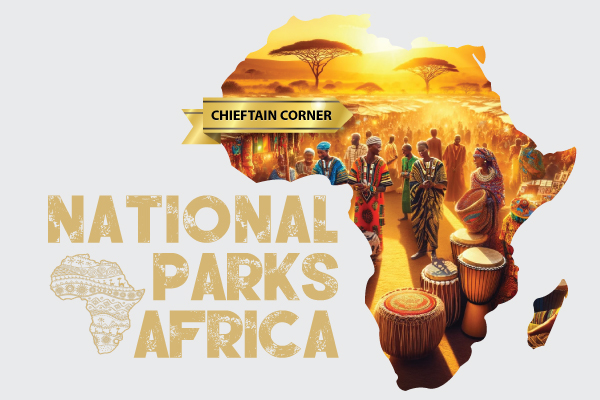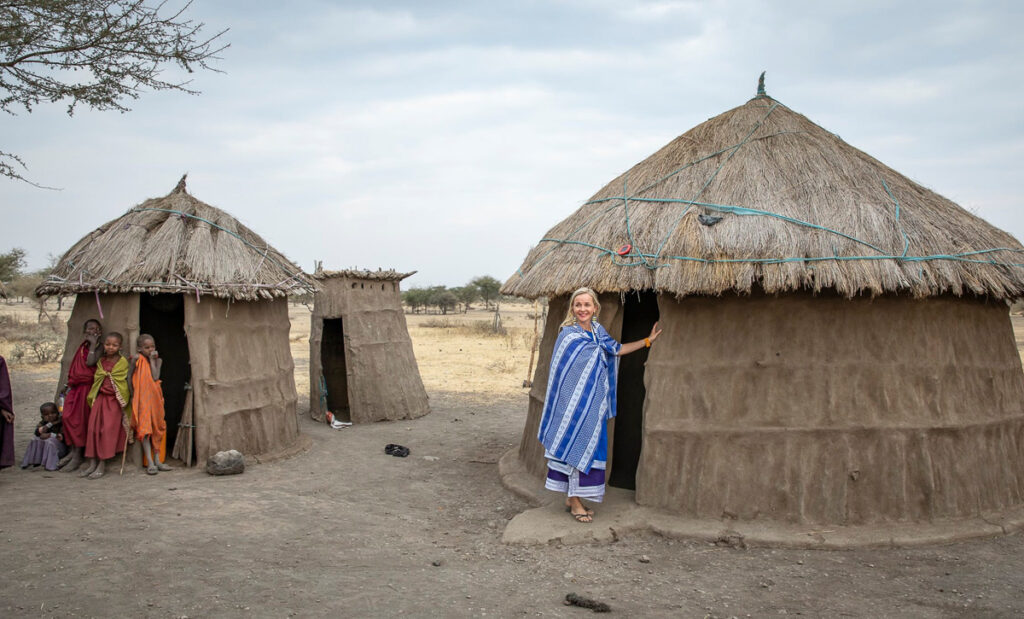Exploring the Maasai Heritage
The Importance of Maasai Conservation and Preservation in Africa
Serengeti National Park, Tanzania, and the Great Migration.
The Maasai people are not just any indigenous group – they’ve been guardians of the land in Tanzania and Kenya for generations. Living in harmony with nature through their nomadic lifestyle, they’ve preserved crucial ecosystems and biodiversity. However, modern challenges like urbanization, globalization, and climate change threaten their way of life and the environment they cherish.
To combat these threats, conservation efforts are underway in Tanzania and Kenya. Organizations like the Maasai Wilderness Conservation Trust and the African Wildlife Foundation work hand in hand with local communities to promote sustainable land management. By empowering Maasai communities, these initiatives ensure that wildlife habitats are protected while preserving traditional lifestyles and indigenous knowledge.
Maasai Serengeti National Park and Maasai Kenya
Picture the vastness of the Serengeti National Park in Tanzania or the Maasai Mara in Kenya. These aren’t just wildlife reserves; they’re the cultural heartlands of the Maasai people. The Maasai play a crucial role in conserving these environments, ensuring the survival of migratory routes vital for the Great Migration of wildebeests and zebras.
Adjacent to these national parks lie Maasai-owned conservancies, offering tourists a unique safari experience while supporting conservation efforts. Initiatives like the Mara Naboisho Conservancy and the Kilimanjaro Landscape Conservation Project show the power of collaboration between conservation organizations and indigenous communities in safeguarding biodiversity and cultural heritage.

Maasai Geographical Context
The Maasai’s home spans the Great Rift Valley in East Africa, from Tanzania’s Ngorongoro Conservation Area to Kenya’s Loita Plains. This diverse landscape boasts grassy plains, acacia woodlands, volcanic mountains, and seasonal waterways. Such varied terrain influences pastoralist activities like cattle herding and agriculture, which depend on the distinct wet and dry seasons.
Iconic landmarks such as Mount Kilimanjaro and the Ngorongoro Crater hold deep cultural significance for the Maasai. They aren’t just geological wonders; they’re sacred sites where spiritual rituals and ceremonies are performed, highlighting the close connection between the Maasai people and their environment.
Maasai History and Origins
The Maasai’s story begins with the Nilotic migrations that swept through East Africa centuries ago. These migrations shaped the Maasai’s distinct identity, marked by their warrior traditions, pastoral lifestyle, and strong social structure. But history took a turn with the arrival of European colonizers, who disrupted Maasai land tenure systems and traditional ways of life.
Despite these challenges, the Maasai have held onto their cultural heritage, passing down oral histories and communal values from generation to generation. Today, they stand as a testament to resilience, adapting to modern realities while preserving their ancestral traditions.
Maasai Language and Communication
In the heart of Maasai communities lies their language, Maa. It’s more than just a means of communication; it’s a cornerstone of cultural identity and social cohesion. With its complex phonetics and grammatical structures, Maa serves as a vessel for preserving traditional knowledge and transmitting cultural values.
While Maa remains the primary language, many Maasai are also proficient in Swahili and English. But regardless of the language spoken, storytelling remains a cherished tradition among the Maasai, enriching cultural narratives and strengthening community bonds.
Maasai Religion and Beliefs
At the core of Maasai spirituality is a monotheistic belief in Enkai or Engai, the creator and provider of all life. Rituals and ceremonies are central to Maasai religious practices, serving as occasions for communing with the divine and reaffirming social bonds. Despite the influence of Christianity and Islam, traditional religious beliefs continue to shape Maasai worldview and cultural practices.
Maasai Social Structure and Customs
Maasai society is structured around age sets, with each stage of life marked by specific rights and responsibilities. Family units, known as bomas, form the foundation of Maasai social organization, with elders playing a pivotal role in decision-making and conflict resolution. Gender roles are clearly defined, but respect for elders, hospitality, and reciprocity are universal values that govern interpersonal relationships.
Maasai Arts and Traditions
Artistic expression is woven into the fabric of Maasai culture, from music and dance to beadwork and storytelling. Music and dance accompany ceremonies and celebrations, serving as a means of cultural transmission and community cohesion. Beadwork, in particular, holds deep spiritual and symbolic significance, with each bead color and pattern conveying specific meanings related to age, marital status, and social rank.
Maasai Cuisine and Food Traditions
The Maasai diet revolves around livestock products like milk, meat, and blood, supplemented by grains, vegetables, and wild fruits. Milk is a staple, consumed fresh or fermented into a tangy beverage known as mursik. Meat, typically from cattle, goats, or sheep, forms the centerpiece of communal feasts and ceremonies, reflecting the practicalities of pastoral life and the Maasai’s connection to their livestock.
Maasai Clothing and Adornments
Traditional Maasai attire is a visual feast of vibrant colors, intricate beadwork, and symbolic adornments. Both men and women wear elaborate jewelry, often incorporating motifs that convey personal stories and affiliations. Clothing styles vary by gender and age, with each garment reflecting cultural identity, status, and beauty.
Maasai Economy and Livelihoods
Traditionally, the Maasai livelihood revolves around pastoralism, with cattle serving as the primary source of wealth and sustenance. But modern challenges like land fragmentation and market integration have prompted Maasai communities to explore alternative income-generating opportunities such as tourism and conservation. Organizations like the Maasai Women Development Organization empower women and youth through skills training and entrepreneurship, enhancing economic resilience and social inclusion within Maasai communities.
Maasai Contemporary Issues and Challenges
In the face of rapid urbanization, land grabbing, and environmental degradation, Maasai communities confront a myriad of challenges. Grassroots movements and advocacy groups amplify Maasai voices and mobilize support for land rights, social justice, and sustainable development. By standing in solidarity with Maasai communities, allies both within and outside Tanzania and Kenya can contribute to addressing these pressing issues and safeguarding Maasai livelihoods, culture, and heritage for future generations.
Notable Maasai Figures and Achievements
From visionary leaders to renowned artists and athletes, the Maasai have produced notable figures who’ve left a lasting impact on East Africa and beyond. These individuals inspire pride and cultural revival through their contributions to Maasai heritage and identity. By celebrating their achievements and preserving their legacies, we honor the enduring spirit and resilience of the Maasai people, affirming their place in the tapestry of human diversity and cultural heritage.
Experience Maasai Village Life
Visiting a Maasai village offers travelers a chance to immerse themselves in traditional customs and daily life. Engaging with community members, sharing meals, and exchanging stories foster cross-cultural understanding and mutual respect. By supporting sustainable tourism initiatives and respecting local customs, travelers can contribute to the preservation of Maasai culture and the empowerment of indigenous communities.
Life in a boma

Anniina Sandberg shares her experience of living in a Tanzanian Maasai family compound with the goats and an occasional scorpion
Maasai News Headlines
2024 : Recent news regarding Maasai communities highlights ongoing struggles for land rights and cultural preservation. Grassroots organizations and advocacy groups work tirelessly to raise awareness and mobilize support for Maasai livelihoods, culture, and heritage. By standing in solidarity with Maasai communities, we can address these pressing issues and uphold indigenous rights for generations to come.
As Maasai activists, scholars, and advocates continue to raise awareness and mobilize support for their cause, solidarity from allies both within and outside Tanzania is crucial in addressing these pressing issues and safeguarding Maasai livelihoods, culture, and heritage for generations to come. Grassroots organizations such as the Pastoral Women’s Council and the Indigenous Information Network provide platforms for Maasai voices to be heard, stories to be shared, and solutions to be collectively devised in response to the complex challenges facing indigenous communities in East Africa and beyond.
The post Exploring the Maasai Heritage first appeared on National Parks in Africa.


Comments are closed